Top GCC Providers for Disaster Recovery Solutions
Explore top disaster recovery providers in the GCC, focusing on key metrics, compliance, and emerging technologies shaping the industry.
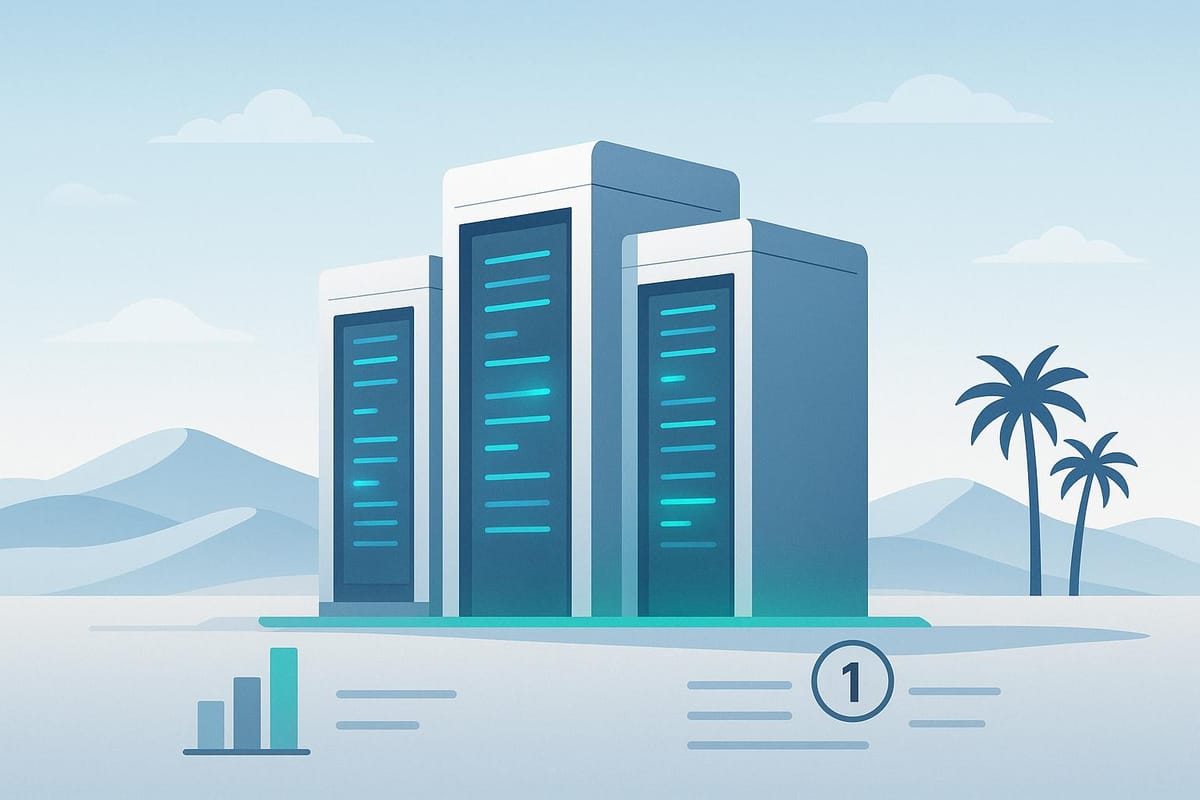
The Gulf Cooperation Council (GCC) is rapidly digitising, with countries like the UAE and Saudi Arabia leading the way. As businesses grow more reliant on digital ecosystems, disaster recovery has become a priority. Here's a quick overview:
- Key Metrics: Ensure your provider offers an RTO of under 4 hours and an RPO of less than 15 minutes for critical systems.
- Data Sovereignty: Providers must comply with local regulations, ensuring data stays within GCC borders.
-
Top Providers:
- CloudHPT: Multi-site replication and an RPO of just 2 minutes.
- Moro Hub: Green-powered facilities with frequent backups.
- BIOS Middle East: Cyber recovery and ransomware protection.
- STC Cloud: 5G-enabled disaster recovery.
- eHosting DataFort: Application-level recovery and automated compliance.
- Emerging Trends: AI-powered recovery tools, blockchain security, and sustainable energy solutions are reshaping the market.
Quick Comparison Table
| Provider | Key Strengths | Unique Features |
|---|---|---|
| CloudHPT | Low RPO (2 mins), multi-site replication | Seamless integration with legacy systems |
| Moro Hub | Solar-powered, frequent backups | UAE's first Tier III green data centre |
| BIOS Middle East | Cybersecurity focus, ransomware protection | Dedicated cyber vault |
| STC Cloud | 5G-enabled recovery, edge computing | Sovereign cloud compliance |
| eHosting DataFort | Application-aware recovery, compliance tools | Regional load balancing |
Disaster recovery is essential for GCC businesses to ensure uptime, compliance, and resilience. Choose a provider that aligns with your operational needs and regulatory requirements.
What is Azure Business Continuity Center?
Provider Selection Criteria
Choosing the right disaster recovery provider in the GCC region requires a thorough evaluation of several critical factors. Organisations need to carefully assess technical capabilities, compliance with regulations, and the geographic distribution of data centres to ensure seamless business continuity.
Performance Standards
Two key metrics - Recovery Time Objective (RTO) and Recovery Point Objective (RPO) - are essential for gauging a provider's effectiveness. Top-tier providers typically offer RTOs of under 4 hours and RPOs of less than 15 minutes for critical systems. These benchmarks should match your organisation's operational demands and regulatory requirements.
Here’s a quick breakdown of performance metrics to consider:
| Performance Metric | Industry Standard | Critical Systems |
|---|---|---|
| RTO | < 8 hours | < 4 hours |
| RPO | < 24 hours | < 15 minutes |
| Uptime SLA | 99.95% | 99.999% |
| Network Latency | < 10 ms | < 5 ms |
Data Regulation Compliance
For organisations operating in the GCC, compliance with regional data sovereignty laws is non-negotiable. It's crucial to confirm that your disaster recovery provider ensures data residency within the GCC. Look for certifications such as ISO 27001, SOC 2, and other local credentials. Additionally, verify that their solutions align with sovereign cloud requirements to meet regulatory standards.
Geographic Coverage
The physical location of a provider's data centres plays a significant role in ensuring resilience and recovery. When evaluating geographic coverage, consider these factors:
- Primary Site Location: The data centre should be close enough to your main business operations for efficient access.
- Secondary Site Distribution: Backup sites should be geographically distant to minimise risks from regional disasters.
- Network Connectivity: Ensure there are direct and reliable connections between primary and backup sites for streamlined recovery processes.
Leading GCC Recovery Providers
The GCC region is home to several prominent disaster recovery providers, each bringing distinct strengths to the table. Here's a closer look at some of the key players that meet essential performance, compliance, and geographic needs.
CloudHPT Services
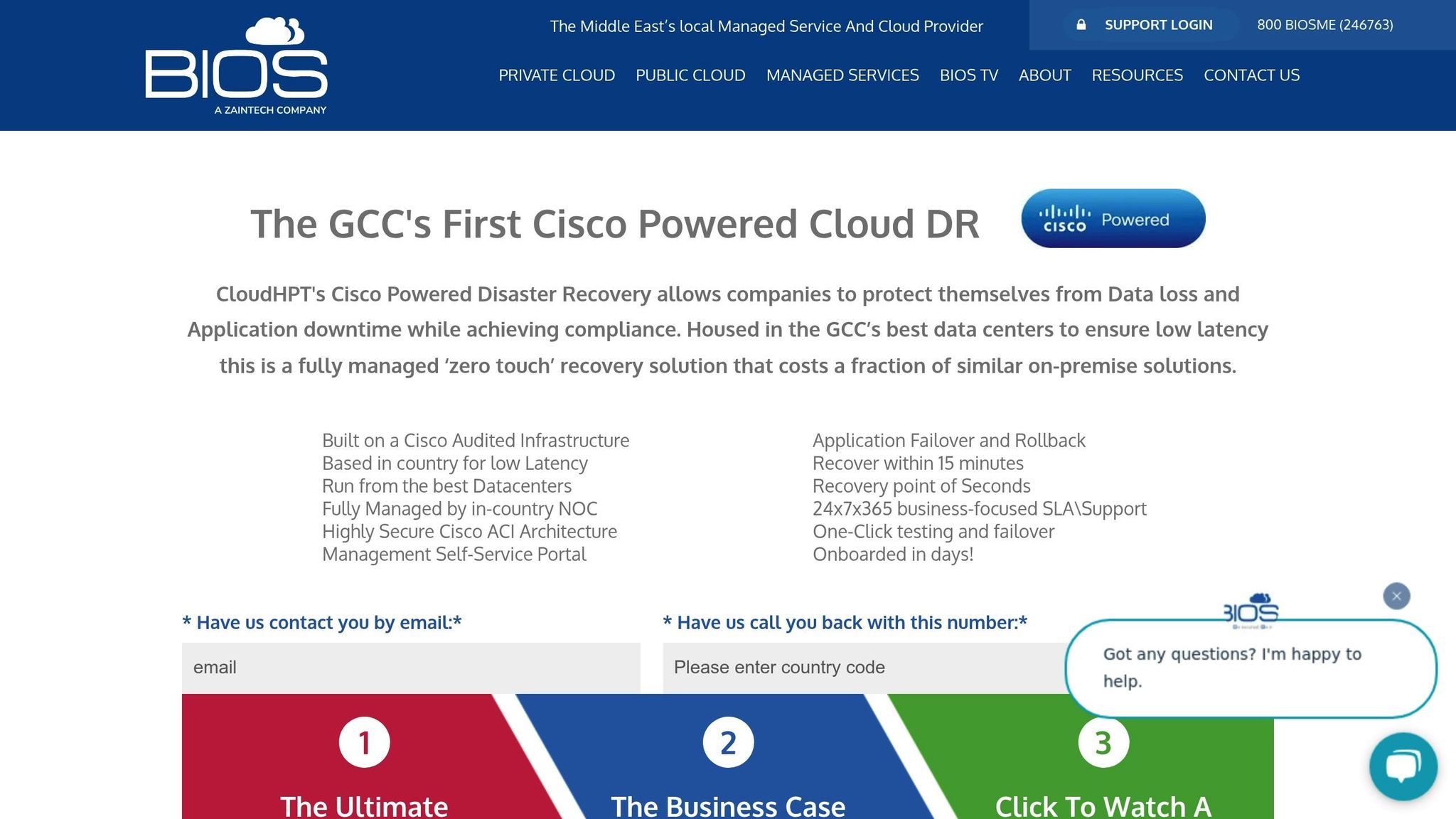
CloudHPT leverages Cisco infrastructure to deliver robust disaster recovery solutions. Operating from their Dubai-based facilities, they ensure an impressive 99.98% uptime, supported by redundant power and cooling systems. Key features include:
- Multi-site replication across the UAE and Saudi Arabia
- Seamless integration with legacy systems through proprietary connectors
- An average Recovery Point Objective (RPO) of just 2 minutes for critical workloads
Moro Hub Solutions
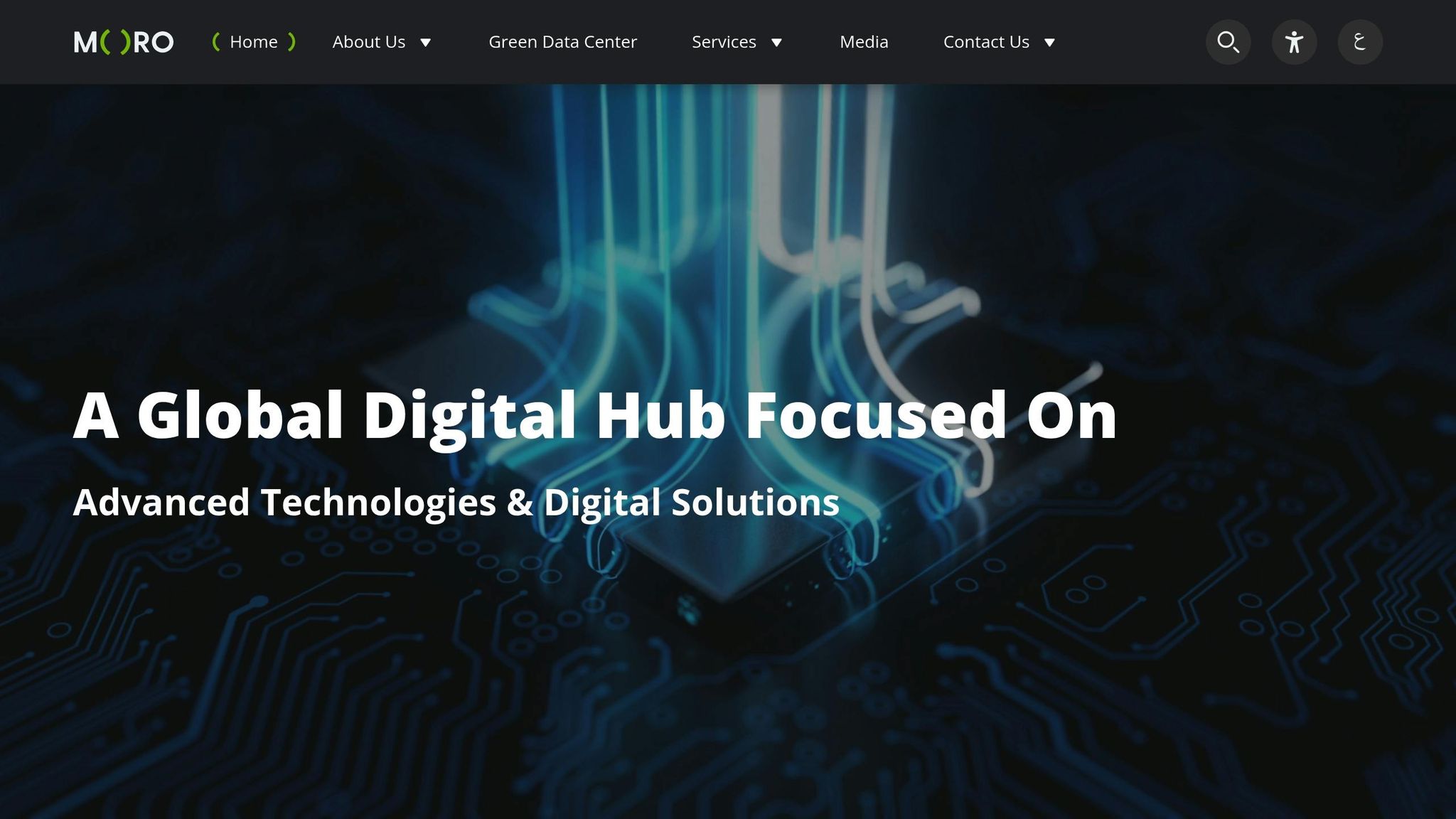
A subsidiary of DEWA, Moro Hub is known for its green initiatives, operating the region's first Tier III certified green data centre. Their disaster recovery services stand out for their sustainable and efficient approach:
| Feature | Capability |
|---|---|
| Power Source | 100% Solar Energy |
| Recovery Sites | 3 locations across the UAE |
| Backup Frequency | Every 5 minutes |
| Government Integration | Direct DEWA utility links |
BIOS Middle East Offerings
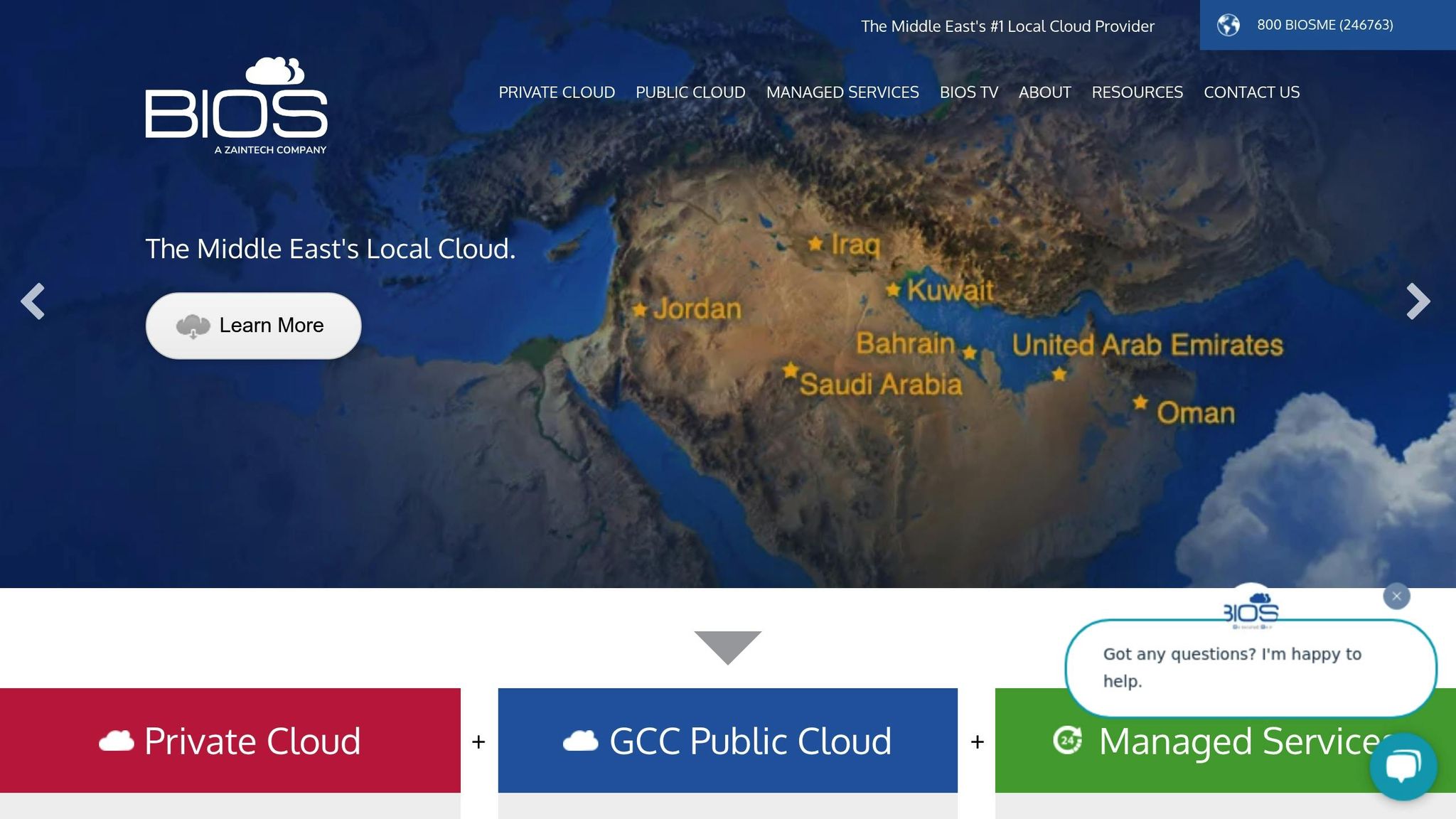
BIOS Middle East focuses on cyber recovery solutions, particularly for industries with stringent compliance needs, such as the financial sector. Their infrastructure spans multiple GCC countries and includes:
- ISO 27001 and PCI DSS certified environments
- Automated failover testing for uninterrupted operations
- A dedicated cyber vault designed to protect against ransomware attacks
STC Cloud Capabilities
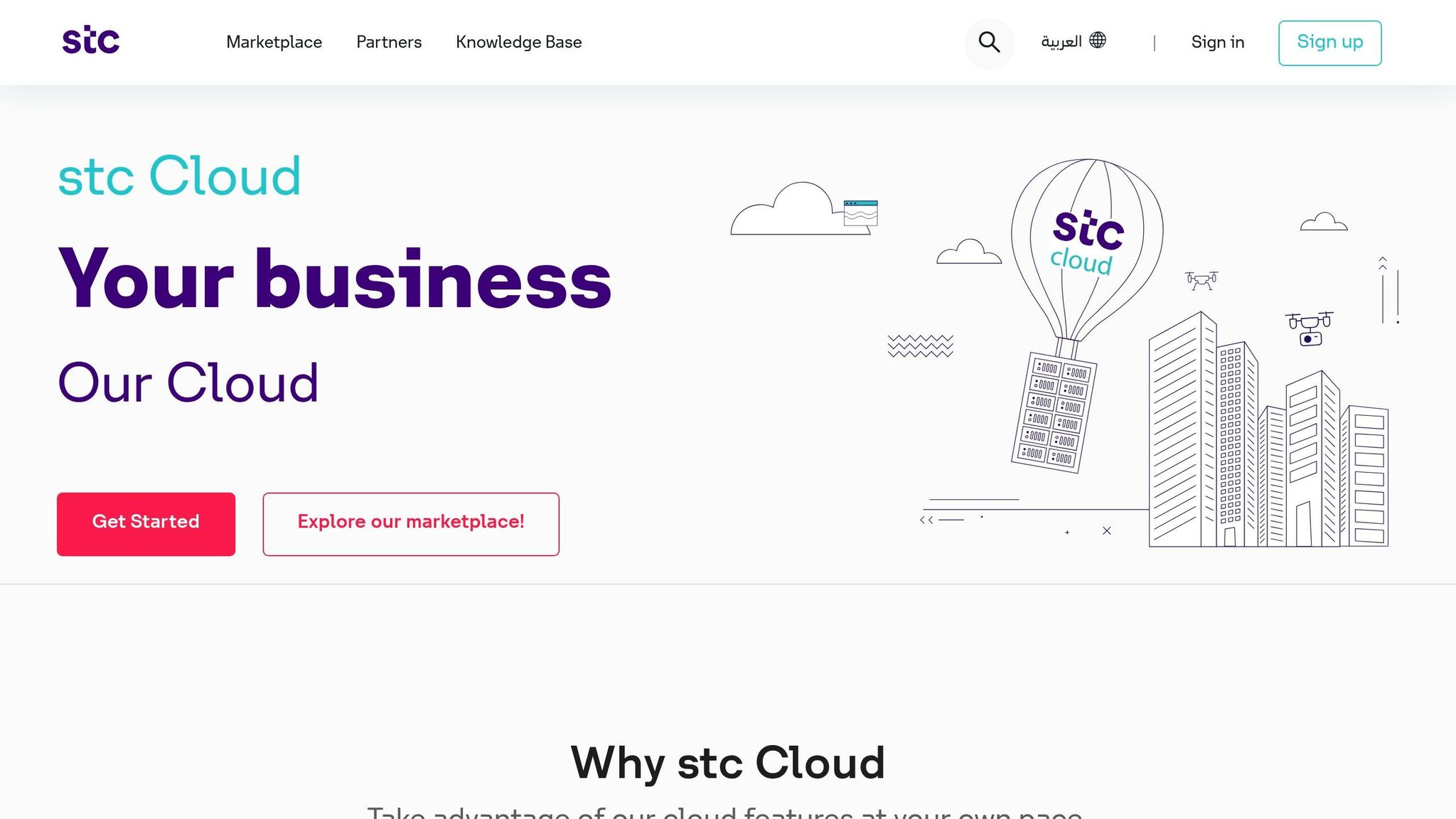
STC Cloud integrates cutting-edge technology into its disaster recovery services, utilising 5G networks to enhance performance. Their platform offers:
- Edge computing recovery points across six GCC locations
- Native 5G failover capabilities for rapid response
- Compliance with sovereign cloud requirements for government entities
eHosting DataFort Systems
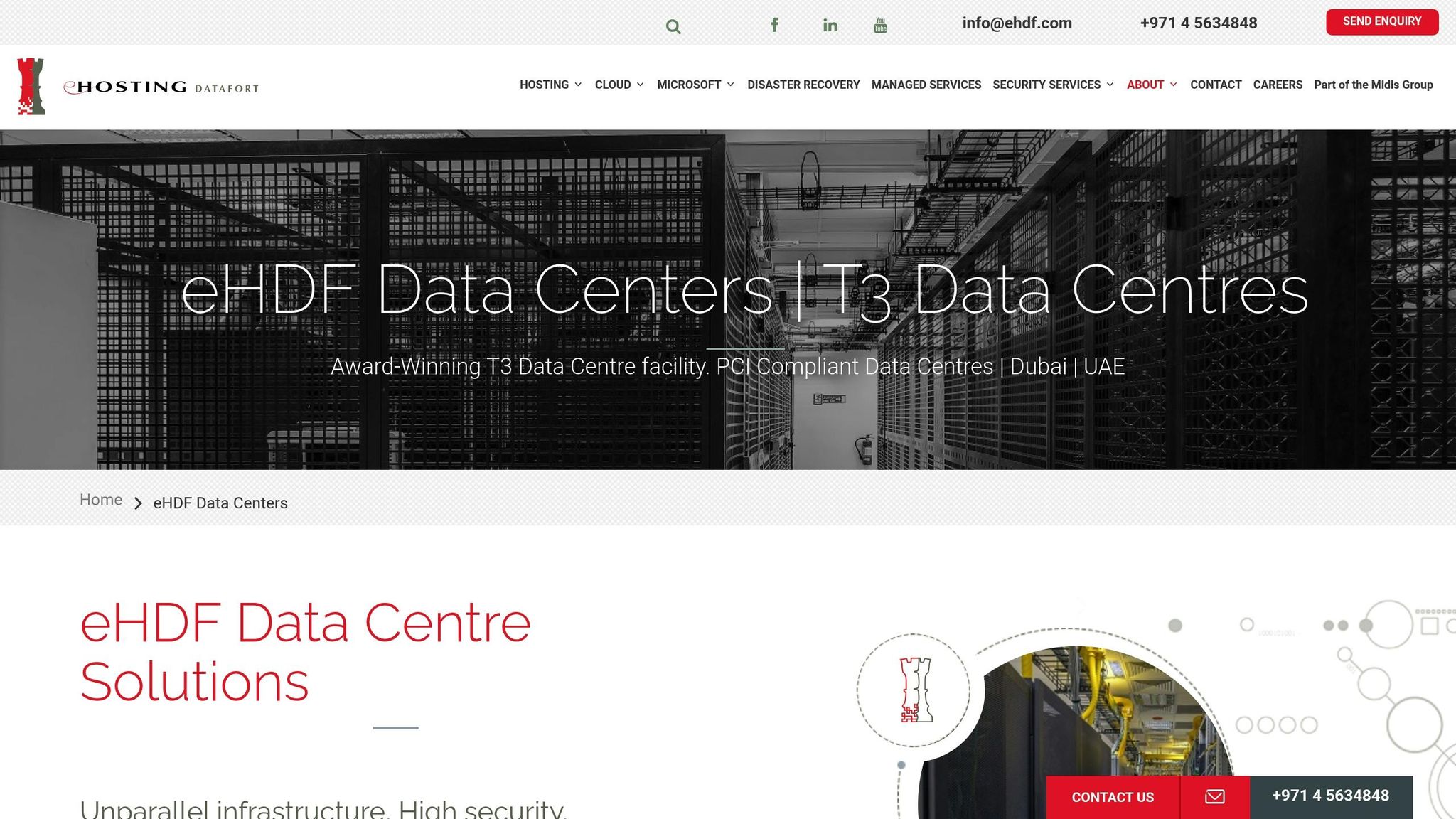
eHosting DataFort specialises in application-level recovery, catering to industries with strict regulatory requirements, such as central banks. Their key features include:
- Application-aware replication for precise recovery
- Automated compliance reporting to meet regulatory mandates
- Regional load balancing across multiple recovery sites for enhanced reliability
New Technology Developments
The GCC region is experiencing a wave of progress in disaster recovery technologies. Providers are introducing cutting-edge solutions that not only reinforce established recovery protocols but also set the stage for more resilient and advanced recovery systems across the region.
Green Energy Solutions
Sustainability is taking center stage in disaster recovery efforts. Here's how green energy technologies are making an impact:
| Technology | Impact | Implementation Example |
|---|---|---|
| Solar Arrays | Boosts on-site renewable energy usage | Moro Hub's facility |
| Liquid Cooling Systems | Cuts energy consumption by up to 30% | BIOS Middle East's Dubai facility |
| AI-Driven Cooling | Enhances cooling efficiency | STC's Riyadh data centre |
| Waste Heat Recovery | Recycles excess heat for other uses | eHosting DataFort systems |
These innovations align with the UAE's sustainability goals while ensuring adherence to regional data sovereignty laws.
Multi-Region Recovery
Disaster recovery providers are now offering faster and more efficient cross-border solutions. Key advancements include:
- Recovery Point Objectives (RPOs) of less than 15 minutes and inter-site latencies under 10 milliseconds, enabling near-instant recovery.
- Automated failover systems that ensure business continuity with minimal intervention.
- Standardised protocols from regional authorities, ensuring compliance with national data sovereignty requirements during cross-border data transfers.
These solutions not only optimise recovery times but also ensure that operations remain compliant with local regulations.
Advanced Recovery Tools
Technological advancements are further refining disaster recovery processes with tools designed for efficiency and security:
-
AI-Powered Predictive Systems
Machine learning algorithms are now used to prioritise recovery tasks based on business needs, cutting unplanned downtime by as much as 70%. -
Blockchain Security Integration
Distributed ledger technology ensures tamper-proof audit trails for backup data, a critical feature for industries like finance and government that demand strict compliance. -
Containerized Recovery Solutions
By using container-based recovery methods, organisations can quickly restore essential application components, slashing Recovery Time Objectives (RTOs) by up to 80%. Regional registries also provide compliance-ready application images for rapid deployment.
The disaster recovery as a service (DRaaS) market in the GCC is expected to grow to AED 1.45 billion by 2025, underscoring the region's focus on robust and modern recovery solutions.
Summary
Selection Guidelines
When choosing disaster recovery providers in the GCC, organisations should prioritise those that adhere to local data sovereignty laws and cybersecurity regulations. Providers like BIOS Middle East and CloudHPT have established frameworks that align with these requirements, ensuring compliance and reliability.
| Selection Criteria | Key Considerations | Regional Impact |
|---|---|---|
| Data Sovereignty | Local data storage to meet UAE laws | Ensures compliance with regulations |
| Service Level Agreements | Recovery time objectives | Influences business continuity |
| Geographic Coverage | Multi-region redundancy | Supports cross-border operations |
| Technical Capabilities | Platform compatibility | Enables hybrid cloud environments |
These factors provide a strong foundation for evaluating providers and understanding emerging trends in the market.
Market Direction
Based on these criteria, the GCC disaster recovery market is experiencing rapid transformation, driven by evolving provider capabilities and strategic innovations. Here are some of the key trends shaping the industry:
- Vendor-Agnostic Solutions: BIOS Middle East has expanded its services to include managed solutions across various platforms. This approach gives businesses more flexibility in tailoring their recovery strategies, making it easier to align with unique operational needs.
- Integrated Digital Transformation: Regional providers are now incorporating digital transformation into their services. For example, Smart Data Recovery in Abu Dhabi has introduced advanced digital forensic tools and flexible server configurations - such as RAID, NAS, and SAN systems - to support comprehensive transformation initiatives.
The market is also seeing a growing focus on sustainability and AI-powered recovery tools. Companies like Swift IT Solutions, which has operated in Abu Dhabi for over 15 years, are achieving impressive results in data protection. These advancements not only align with the GCC's broader digital transformation goals but also ensure compliance with local regulations. Such innovations are paving the way for more resilient and informed business continuity strategies across the region.
FAQs
What should businesses in the GCC consider to ensure data sovereignty compliance when choosing a disaster recovery provider?
To comply with data sovereignty requirements in the GCC, businesses need to focus on providers that handle data storage and processing strictly within the region. It's crucial to confirm that the provider's data centres are based in GCC countries and adhere to local laws, such as the UAE's data protection regulations or Saudi Arabia's cloud computing policies.
You should also evaluate the provider's certifications, like ISO 27001, which ensures high standards for information security. Look for providers that can tailor their solutions to meet the compliance demands of your specific industry. Equally important is choosing a partner that prioritises transparency in their operations and employs strong data encryption practices to protect sensitive information effectively.
How do AI-driven tools and blockchain technology improve disaster recovery solutions in the GCC region?
AI and blockchain are reshaping disaster recovery strategies across the GCC, making them faster, safer, and more dependable. AI-powered solutions can anticipate system failures, streamline recovery efforts, and automate responses. This not only minimises downtime but also ensures smooth business operations - an absolute necessity for companies in the UAE and the broader GCC, where consistent performance is non-negotiable.
Meanwhile, blockchain technology strengthens security by offering tamper-resistant data storage and transparent transaction tracking. This is crucial for safeguarding sensitive business data during recovery processes. By combining these technologies, organisations in the GCC can implement disaster recovery plans that are not only robust but also aligned with the region's specific business demands.
What should businesses in the GCC consider when evaluating disaster recovery providers for geographic coverage and technical capabilities?
When choosing a disaster recovery provider in the GCC, businesses need to prioritise geographic reach and technical expertise that match their specific needs. It's important to ensure the provider has a solid presence in key markets like the UAE, Saudi Arabia, and Qatar. This proximity can significantly reduce recovery times and help ensure compliance with local regulations.
Take a close look at the provider's technical offerings, such as data replication speed, scalability, and how well their solutions integrate with your current IT setup. Advanced features like cloud-based disaster recovery, real-time monitoring, and strong cybersecurity protections are worth considering. Providers that offer flexible, tailored solutions and take sustainability into account may be better equipped to support businesses aiming for long-term resilience.
Finally, review the provider’s experience in the GCC region, paying attention to their track record for customer support and their ability to meet local business continuity standards. Comparing newer, tech-savvy entrants to well-established firms can help you find the right partner for your organisation.
